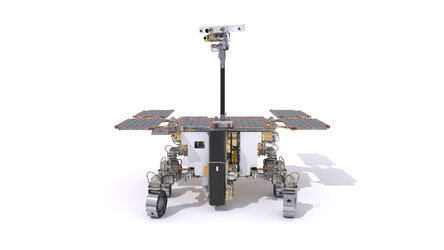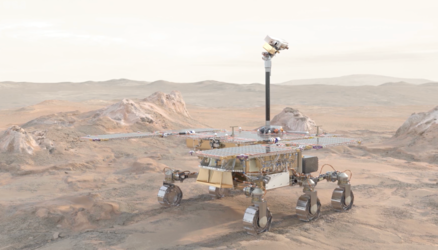Accept all cookies Accept only essential cookies See our Cookie Notice

About ESA
The European Space Agency (ESA) is Europe’s gateway to space. Its mission is to shape the development of Europe’s space capability and ensure that investment in space continues to deliver benefits to the citizens of Europe and the world.
Highlights
ESA - United space in Europe
This is ESA ESA facts Member States & Cooperating States Funding Director General Top management For Member State Delegations European vision European Space Policy ESA & EU Space Councils Responsibility & Sustainability Annual Report Calendar of meetings Corporate newsEstablishments & sites
ESA Headquarters ESA ESTEC ESA ESOC ESA ESRIN ESA EAC ESA ESAC Europe's Spaceport ESA ESEC ESA ECSAT Brussels Office Washington OfficeWorking with ESA
Business with ESA ESA Commercialisation Gateway Law at ESA Careers Cyber resilience at ESA IT at ESA Newsroom Partnerships Merchandising Licence Education Open Space Innovation Platform Integrity and Reporting Administrative Tribunal Health and SafetyMore about ESA
History ESA Historical Archives Exhibitions Publications Art & Culture ESA Merchandise Kids Diversity ESA Brand Centre ESA ChampionsLatest
Space in Member States
Find out more about space activities in our 23 Member States, and understand how ESA works together with their national agencies, institutions and organisations.
Science & Exploration
Exploring our Solar System and unlocking the secrets of the Universe
Go to topicAstronauts
Missions
Juice Euclid Webb Solar Orbiter BepiColombo Gaia ExoMars Cheops Exoplanet missions More missionsActivities
International Space Station Orion service module Gateway Concordia Caves & Pangaea BenefitsLatest
Space Safety
Protecting life and infrastructure on Earth and in orbit
Go to topicAsteroids
Asteroids and Planetary Defence Asteroid danger explained Flyeye telescope: asteroid detection Hera mission: asteroid deflection Near-Earth Object Coordination CentreSpace junk
About space debris Space debris by the numbers Space Environment Report In space refuelling, refurbishing and removingSafety from space
Clean Space ecodesign Zero Debris Technologies Space for Earth Supporting Sustainable DevelopmentLatest
Applications
Using space to benefit citizens and meet future challenges on Earth
Go to topicObserving the Earth
Observing the Earth Future EO Copernicus Meteorology Space for our climate Satellite missionsCommercialisation
ESA Commercialisation Gateway Open Space Innovation Platform Business Incubation ESA Space SolutionsLatest
Enabling & Support
Making space accessible and developing the technologies for the future
Go to topicBuilding missions
Space Engineering and Technology Test centre Laboratories Concurrent Design Facility Preparing for the future Shaping the Future Discovery and Preparation Advanced Concepts TeamSpace transportation
Space Transportation Ariane Vega Space Rider Future space transportation Boost! Europe's Spaceport Launches from Europe's Spaceport from 2012
Mars rover revival
Thank you for liking
You have already liked this page, you can only like it once!
As Mars exploration prepares for a rebirth, a European rover tunes up its gear for the challenges ahead.
Tomorrow, 23 July, ESA and dozens of industrial partners will assess the readiness of the ExoMars robotic explorer, named Rosalind Franklin, for a trip to the Red Planet in 2022. The European rover will drill down to two metres into the martian surface to sample the soil, analyse its composition and search for evidence of life buried underground.
The rover successfully proved that it is fit to endure the martian conditions during the environmental test campaign earlier this year in Toulouse, France. This laboratory on wheels withstood temperatures as low as –120°C and less than one hundredth of Earth’s atmospheric pressure to simulate the extremes of its journey through space and on the surface of Mars.
During environmental tests, disbonding was detected between the solar panels and the hinges that hold and fold the outer wings for the journey to Mars. Mechanical fasteners have been added at the Airbus facilities in Stevenage, in the UK, to address this critical issue. The new set of panels is already at Thales Alenia Space in Turin, Italy, where the rover awaits power up at the beginning of August 2020.
The disruptions caused by the coronavirus pandemic have added new obstacles for industry across Europe on the road to Mars. Parachute and interface tests are expected to resume in October.
New missions to Mars launch from a broad range of nations – while the United Arab Emirates’ historic first mission to Mars lifted off from Japan last Sunday, China is preparing to launch tomorrow its first rover to Mars, known as Tianwen-1. NASA’s Mars 2020 mission is set to take off with the Perseverance rover onboard next week, on July 30.
These missions focus on the search for evidence of life on the Red Planet and a better understanding of how Earth and Mars evolved so differently.
“We hope that ESA’s Rosalind Franklin rover will help write a new page in Mars exploration by allowing us to study organic molecules on the spot,” says Jorge Vago, ESA’s ExoMars project scientist.
Dr Rosalind Franklin, the prominent scientist behind the discovery of the structure of DNA, one of life’s most important molecules, would have been 100 years old on 25 July this year. Her niece, also named Rosalind Franklin in her memory, points out that the X-ray diffraction expert “never conceived science as a race of competitors.”
After a visit to ESA’s technical centre in the Netherlands last year, Rosalind believes that her aunt would have loved the ExoMars team spirit. “The work of ESA engineers on the rover struck me – they really do it for the results, not for themselves. This is what Rosalind Franklin was all about: commitment and dedication to science,” said Rosalind from her home in California, US.
A series of talks and events is taking place around the globe this week to celebrate the centenary of this “woman of integrity who went after scientific discovery for the betterment of humankind”, as her niece describes her. The legacy of the scientist lives on today, and the ExoMars rover will help leave her symbolic footprint on Mars in 2023.
The ExoMars rover is part of the ExoMars programme, a joint endeavour between ESA and the Russian State Space Corporation, Roscosmos.
-
CREDIT
Airbus -
LICENCE
ESA Standard Licence

ExoMars Rosalind Franklin rover

ExoMars rover: front view

ExoMars rover in Cannes

ExoMars rover during environmental tests















 Germany
Germany
 Austria
Austria
 Belgium
Belgium
 Denmark
Denmark
 Spain
Spain
 Estonia
Estonia
 Finland
Finland
 France
France
 Greece
Greece
 Hungary
Hungary
 Ireland
Ireland
 Italy
Italy
 Luxembourg
Luxembourg
 Norway
Norway
 The Netherlands
The Netherlands
 Poland
Poland
 Portugal
Portugal
 Czechia
Czechia
 Romania
Romania
 United Kingdom
United Kingdom
 Slovenia
Slovenia
 Sweden
Sweden
 Switzerland
Switzerland
























